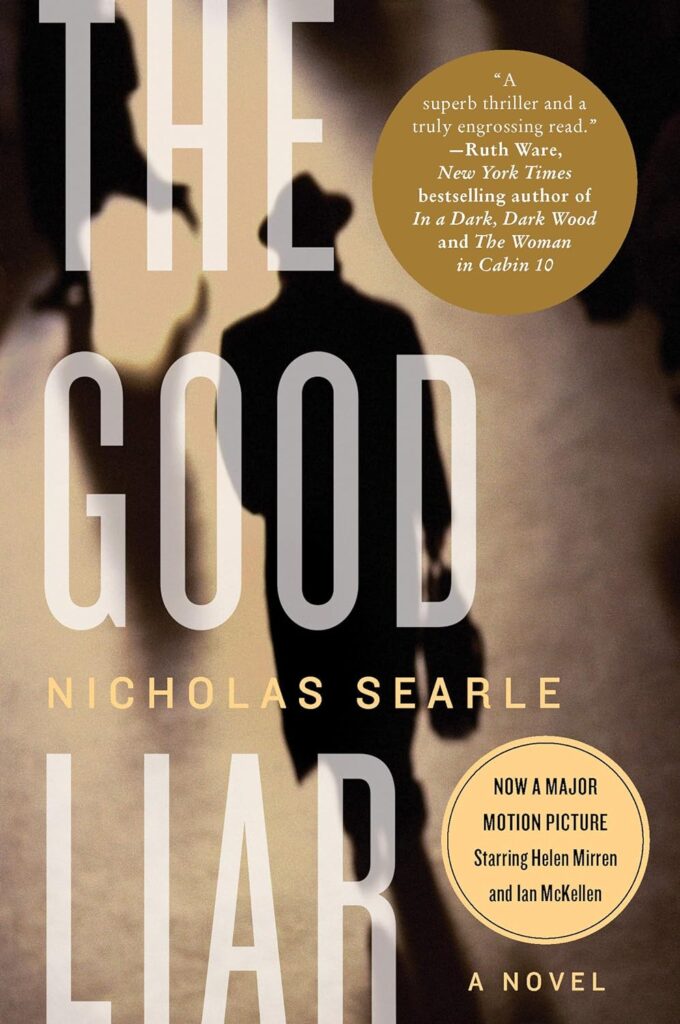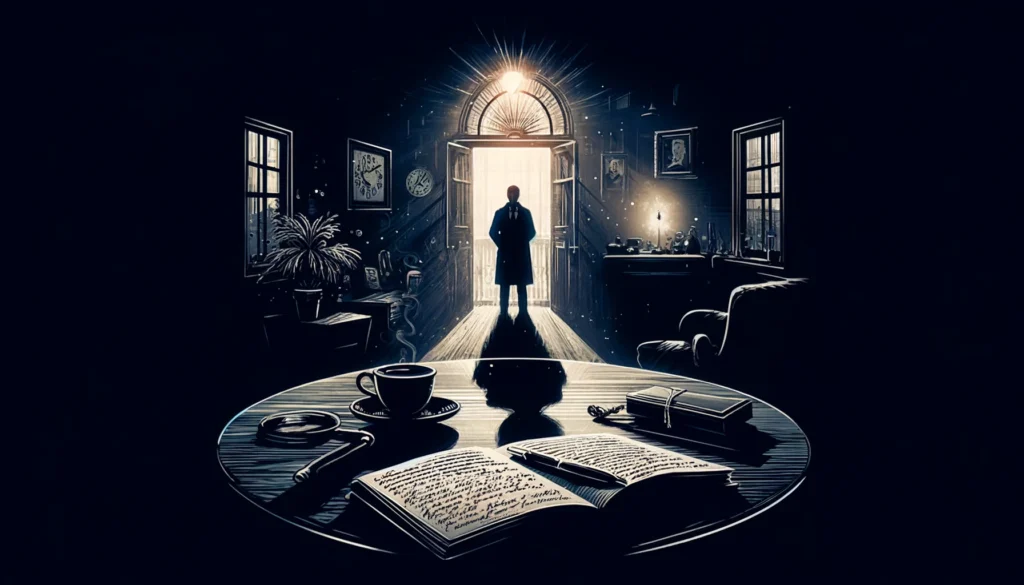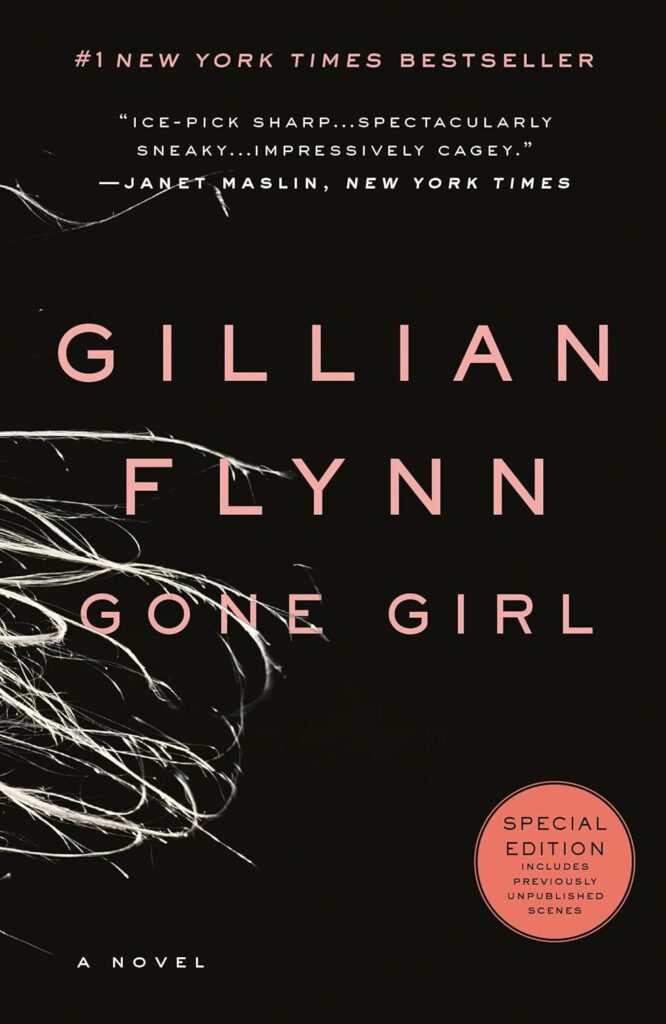When I first picked up “The Good Liar” by Nicholas Searle, I was immediately intrigued by the title. I’m a sucker for psychological thrillers that promise a web of deceit and unexpected twists. This book did not disappoint in that regard. As someone who loves diving into the minds of complex characters, I found “The Good Liar” to be a fascinating journey. In this review, I’ll take you through the highs and lows of this novel, sharing my personal takeaways and insights.
Overview of the Plot

The Setup
“The Good Liar” revolves around two main characters, Roy and Betty. Roy is an elderly con artist, and Betty is his latest target. The story begins with them meeting through an online dating site, which sets the stage for what seems to be a straightforward romance. However, as the plot unfolds, it becomes clear that both characters are hiding secrets, and nothing is as simple as it appears.
Dual Timelines
One of the unique aspects of this book is its dual timeline structure. The narrative switches between the present day, where Roy and Betty’s relationship develops, and flashbacks to Roy’s past, revealing his life of deception and manipulation. This back-and-forth storytelling keeps the reader on their toes, constantly reassessing what they know about the characters.
Writing Style and Narrative Structure
Searle’s Craftsmanship
Nicholas Searle has a distinctive writing style that is both engaging and thought-provoking. His use of language is precise, creating an atmosphere of tension and suspense. I particularly enjoyed how he crafted the dialogue, making it feel natural and authentic. This authenticity is crucial in a thriller, as it keeps the reader invested in the characters’ fates.
Pacing and Flow
The pacing of “The Good Liar” is another highlight. Searle manages to maintain a steady rhythm, gradually building suspense without overwhelming the reader with too much information at once. The transitions between the present and past are seamless, enhancing the narrative rather than disrupting it. I found myself eagerly turning pages, desperate to uncover the next piece of the puzzle.
Character Development

Roy and Betty
Roy is a complex character, and Searle does an excellent job of fleshing out his personality. Despite his morally dubious actions, there’s a certain charm to Roy that makes him an intriguing protagonist. His manipulative nature is juxtaposed with moments of vulnerability, adding depth to his character.
Betty, on the other hand, is portrayed as a seemingly naive widow, but as the story progresses, we see that she is far more perceptive and resilient than Roy anticipates. Their interactions are a dance of wits, each trying to outsmart the other. This dynamic keeps the reader guessing about who will ultimately come out on top.
Supporting Characters
The supporting cast also plays a crucial role in the story. Vincent, Roy’s long-time accomplice, adds another layer of complexity to Roy’s character. Their relationship is built on mutual benefit but also hints at deeper, unspoken bonds. The minor characters, while not as fleshed out, serve to move the plot forward and add context to Roy and Betty’s world.
Themes and Motifs

Deception and Trust
At its core, “The Good Liar” is a study of deception and trust. Searle explores how people deceive not only others but also themselves. Roy’s life is built on lies, yet he seems to believe in his own righteousness. Betty’s ability to see through Roy’s facade raises questions about trust and intuition.
Morality and Redemption
The book also delves into themes of morality and redemption. Can a lifetime of deceit be atoned for? Is Roy beyond redemption, or is there a possibility for change? These questions linger throughout the novel, prompting the reader to reflect on the nature of right and wrong.
Strengths of the Book
Engaging Plot Twists
One of the most enjoyable aspects of “The Good Liar” is its plot twists. Just when you think you have figured out the story, Searle throws in a curveball that changes everything. These twists are well-executed and feel organic to the story, rather than being forced or contrived.
Suspense and Tension
The suspense in this novel is palpable. Searle masterfully builds tension through his careful pacing and strategic revelations. I found myself holding my breath during several key scenes, eager to see how the characters would navigate their predicaments.
Emotional Impact
Despite its dark themes, “The Good Liar” has moments of genuine emotional impact. The characters’ vulnerabilities and struggles make them relatable, even when their actions are reprehensible. I appreciated how Searle balanced the psychological thriller elements with these poignant moments.
Weaknesses and Criticisms
Pacing Issues
While the pacing is generally strong, there are moments where the story slows down a bit too much. Some of the flashbacks, while informative, could have been trimmed to maintain the narrative momentum. I found myself occasionally wanting to skip ahead to get back to the main storyline.
Character Arcs
While Roy and Betty are well-developed, some of the supporting characters feel underutilized. Vincent, for example, has an intriguing backstory that is only partially explored. A deeper dive into these secondary characters could have added more richness to the story.
Comparison with Similar Works

Genre Standouts
In the realm of psychological thrillers, “The Good Liar” holds its own. It shares similarities with works like “Gone Girl” by Gillian Flynn and “The Girl on the Train” by Paula Hawkins, both of which also feature unreliable narrators and complex plots. However, Searle’s focus on an older protagonist sets it apart, offering a fresh perspective in a genre often dominated by younger characters.
Unique Elements
What makes “The Good Liar” unique is its exploration of aging and deception. Roy’s age adds an interesting dimension to his character, highlighting how years of deceit have shaped his identity. This focus on an older con artist is a refreshing change from the norm and adds depth to the narrative.
Adaptations and Cultural Impact
The Film Adaptation
“The Good Liar” was adapted into a film in 2019, starring Ian McKellen and Helen Mirren. The film stays true to the essence of the book but makes some changes to the plot and characters. Watching the film after reading the book was an interesting experience; it was fascinating to see how the actors brought Roy and Betty to life.
Reception and Influence
The book and its adaptation have both received positive reviews, though some critics argue that the film lacks the depth of the novel. Nevertheless, “The Good Liar” has made a significant impact, contributing to the ongoing popularity of psychological thrillers.
Conclusion
In conclusion, “The Good Liar” by Nicholas Searle is a compelling psychological thriller that masterfully blends suspense, intrigue, and emotional depth. Despite some minor pacing issues and underdeveloped secondary characters, the novel’s strengths far outweigh its weaknesses. The engaging plot twists, well-crafted characters, and thought-provoking themes make it a must-read for fans of the genre.
Whether you’re a long-time lover of thrillers or new to the genre, “The Good Liar” offers a fresh and captivating experience. So, grab a copy, settle into your favorite reading nook, and prepare to be taken on a rollercoaster ride of deceit and revelation. Happy reading!
Additional Resources
For those interested in exploring more works by Nicholas Searle, I recommend checking out his other novels, which continue to showcase his talent for crafting intricate and engaging stories. Additionally, fans of “The Good Liar” might enjoy similar books such as “The Silent Patient” by Alex Michaelides and “Before I Go to Sleep” by S.J. Watson.
If you’ve read “The Good Liar” and have thoughts or reactions, feel free to share them in the comments below. I’d love to hear your perspectives and discuss this intriguing novel further.
